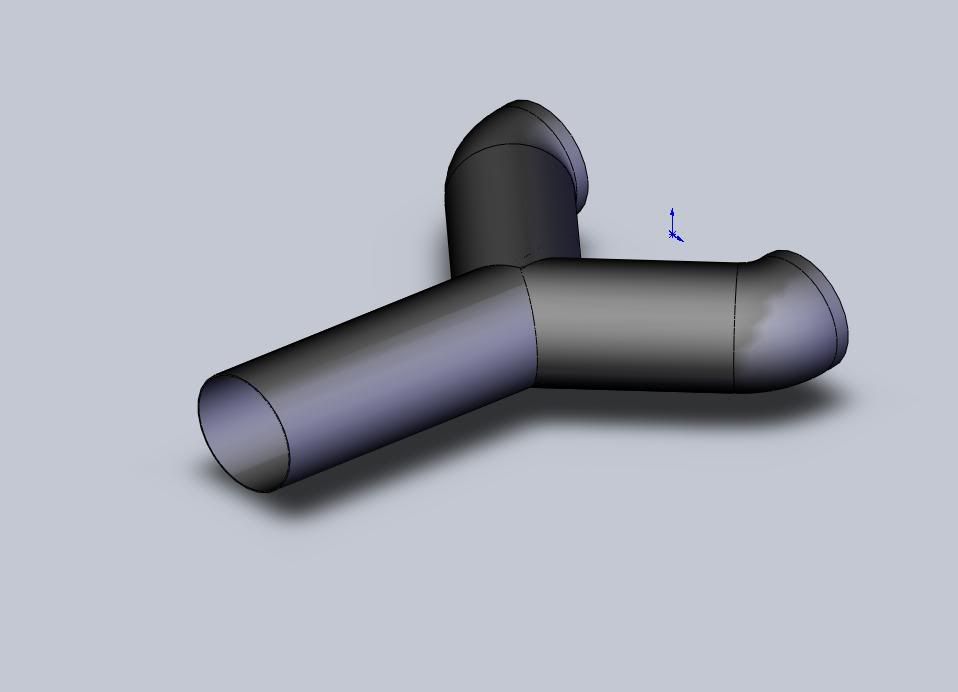One thing that I dislike about the twisted kits is its charge tube mostly the airbox. I have made a couple different style airbox and I have found on the dyno (hp) and time before it makes boost. That twisted desgin all though its simple and clean takes the most pounds of boost to make the same horsepower and had a longer spool time. Remember boost in it self is a measure of restriction. Also from what I have found you are better off feeding air straight in the throttle bodys instead of on the side creates alot less turblance in the system and takes less pressure to do so.
Understand I work with with PSI/FLOW in my everyday job when im not fighting crime at night as a super hero, and completely understand what you are talking about…but
Yes flow goes down and pressure goes up in the area of a bend (90 degrees or whatever)…this is a very basic theory in gas pipe applications. But this loss/gain or however you want to look at it is very minimal and even more minimal in a small engine application. I typically see 1% drop in flow and 3% raise in pressure in a 42” 90 degree pipe that has 1200PSI…I can only imagine the loss/gain would be somewhat proportion in smaller ID pipe with less pressure. The common talk of loss/gain in bends are extremely over rated and typically found in publications from turbo and gas turbine manufactures. A gas turbine pushing 30K HP has a huge loss when you lower flow by 1%...this can cost a company 10-50K on one turbo/turbine. It’s also optimal to take pressure measurements at 3X the pipe ID away from any bend and closer to its discharge or suction side.....but once again, this is way over rated when your looking at 5-15PSI
Calculating flow is something you don’t see the turbo guys doing, because its also over rated on these small engine applications…flow is sometimes more important then pressure readings. A guy can simply install a orifice plate about 80ish% of the Pipe ID and take a differential pressure reading across this orifice that and calculate flow….i know, i know…i taking this lawn mower turbo stuff a bit too far. At the end of the day, boost is far to fun and all kits rock….keep pushing forward guys!
On the topic of lag or overcoming spool up or whatever you wish to phase it…it’s simple really. The compressor wheel is fixed, bigger compressors need more time (more compressor RPM) to make differential pressure (or think of it as more discharge then suction)….and the volume of area in-between the discharge of the turbo compressor and the throttle bodies is the other fixed area for getting up to boost levels…consider filling a 1 gallon tank of water as opposed to filling a two gallon tank of water...the 1 gallon tank will fill up quicker with the supply of water to both tanks is the same, I know this seems like some kindergarten talk, but it really is that simple
Compressors – a variable vane compressor would be ideal…but it’s too expensive and rotors with moving parts tend to last less than stationary rotors.
Would the twisted kit be more ideal (closer to perfect) if it had an airbox where the charge tube was more in-line with flow?…sure it would be, but one would think the pressure of boost will better help the pressures in the airbox equalize the pressures found in varius areas of the airbox....once again, this is a bit over rated.
Understand the pressures in the charge tube are defused in the larger volume airbox…so pressure will go down a bit and airbox will act as an air defuser
Keep in mind, all the REVs/RT/XP I owned all have a similar airbox to what the twisted kit has….so this issue should be considered mostly over rated.



